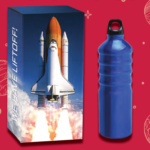In today’s rapidly evolving business landscape, the importance of sustainable practices cannot be overstated. Companies across industries are recognizing the need to incorporate sustainability into their operations, and one crucial area where this is evident is in custom packaging. Custom packaging not only serves as a means to protect and present products but also as a canvas for branding and conveying a company’s values. Balancing sustainability with market trends in custom packaging is a challenge many businesses face, but it is also an opportunity to align environmental responsibility with consumer preferences.
The Rise of Sustainability in Custom Packaging
In recent years, there has been a significant shift in consumer preferences towards eco-friendly products and packaging. Shoppers are becoming more environmentally conscious and are actively seeking products that align with their values. As a result, sustainability has moved from a niche concern to a mainstream demand, and custom packaging plays a crucial role in meeting these expectations.
Key Elements of Sustainable Custom Packaging
Materials: Choosing sustainable materials is a fundamental step in creating eco-friendly custom packaging. Materials like recycled cardboard, biodegradable plastics, and FSC-certified paper are gaining popularity as they have a lower environmental impact compared to traditional packaging materials.
Design: Efficient packaging design can reduce waste and lower the carbon footprint of your products. Minimizing excess space and using packaging that fits the product snugly can help optimize materials and reduce shipping costs.
Reusable and Recyclable Packaging: Custom packaging that is designed for reuse or recycling provides a clear environmental benefit. Customers appreciate packaging they can easily repurpose or recycle, as it aligns with their sustainability goals.
Ink and Printing: Consider using soy-based or water-based inks for printing on custom packaging. These options are less harmful to the environment compared to traditional petroleum-based inks.
Aligning Sustainability with Market Trends
Transparency: Transparency is a growing trend in the market, and consumers want to know where and how products are made. Incorporating sustainability into your packaging and clearly communicating your efforts can build trust with your customers.
Minimalism and Simplicity: Simple and elegant packaging designs are gaining popularity. They not only reduce waste but also resonate with the minimalist aesthetic that many consumers appreciate today.
Personalization: Custom packaging allows for unique branding opportunities. Consider incorporating sustainability into your brand story and messaging. Showcasing your commitment to eco-friendly practices can be a powerful marketing tool.
E-commerce-Friendly Packaging: As e-commerce continues to grow, packaging that is designed for shipping efficiency is a key trend. Sustainable custom packaging that is both protective and space-efficient can save costs and reduce environmental impact.
Challenges and Opportunities
Balancing sustainability with market trends in custom packaging is not without its challenges. Sustainable materials can sometimes be more expensive, and transitioning to eco-friendly practices may require initial investments in research and development. However, these challenges are also opportunities for innovation and differentiation.
By adopting sustainable practices in custom packaging, businesses can not only meet the growing demand for eco-friendly products but also contribute to a healthier planet. Moreover, it can be a powerful marketing tool that resonates with a broader audience and sets your brand apart in a competitive market.
The future of custom packaging lies at the intersection of sustainability and market trends. By embracing eco-friendly materials, designs, and practices, businesses can create packaging solutions that are both visually appealing and environmentally responsible. This balance not only benefits the planet but also positions companies to thrive in an evolving market where sustainability is a driving force behind consumer choices.



